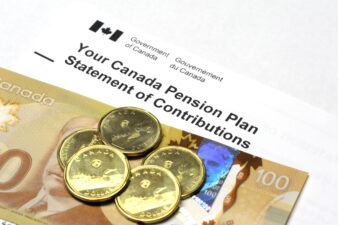Canadian retirees are searching for ways to boost income without being pushed into a higher or tax bracket or triggering the Old Age Security (OAS) pension clawback. One popular strategy to earn passive income and achieve these goals is to use a Tax-Free Savings Account (TFSA).
TFSA limit
The TFSA limit is $6,500 in 2023. This brings the cumulative maximum TFSA contribution room to $88,000 per person. As such, a retired couple would have as much as $176,000 in TFSA investment room this year.
The 2024 TFSA contribution limit will be at least another $6,500 per person and could jump to $7,000. The government indexes the size of the annual TFSA limit to inflation and increases the amount in $500 increments.
All earnings generated inside the TFSA are tax-free. That means retirees can put the full value of interest, dividends, and capital gains right into their pockets. In addition, the amount removed from the TFSA during the year will open up equivalent new contribution space in the following calendar year.
OAS clawback
Pensioners who receive OAS need to keep an eye on their net world income. As soon as earnings from all taxable sources top a minimum threshold, the Canada Revenue Agency implements a 15% OAS pension recovery tax on every dollar above that amount. The threshold for the 2023 income year is $86,912.
So, a person with a net world income of $106,912 in 2023 would see their OAS reduced by $3,000 for the July 2024 to June 2025 payment period.
This is a big hit that seniors can’t afford to take in the current era of soaring living costs. One way to reduce or avoid the OAS clawback is to ensure that TFSA contributions are maximized before holding investments in taxable accounts.
Best way to generate TFSA passive income
Retirees can finally get decent rates on Guaranteed Investment Certificates (GICs). Rates above 5% are available from some Canada Deposit Insurance Corporation (CDIC) members for terms ranging from one year to five years. That’s a decent return on an investment that is risk-free as long as the amount is within the $100,000 limit.
High-yield stocks are another option, but they come with capital risk, as investors have witnessed in the past year. In the current market conditions, however, retirees who are comfortable riding out some volatility have an opportunity to get very attractive dividend yields from top TSX dividend-growth stocks.
Enbridge (TSX:ENB), for example, has increased its dividend annually for the past 28 years and now offers a yield of 8%. The drop in the share price from $59 at the 2022 high to the current price of around $44 looks overdone.
As soon as interest rates top out and begin to decline, Enbridge and other out-of-favour Canadian dividend-growth stocks could catch a new tailwind and move considerably higher.
The bottom line on TFSA passive income
The right mix of GICs and dividend stocks depends on a person’s risk tolerance, desired returns, and need for access to the invested capital. In the current environment, an investor can quite easily build a diversified portfolio of GICs and dividend stocks to get an average yield of 6%.
On a $40,000 TFSA, this would generate $2,400 per year in tax-free income. A couple with combined TFSA investments of $80,000 could therefore generate $4,800 annually that won’t push them into a higher marginal tax bracket or put OAS at risk of a clawback.








